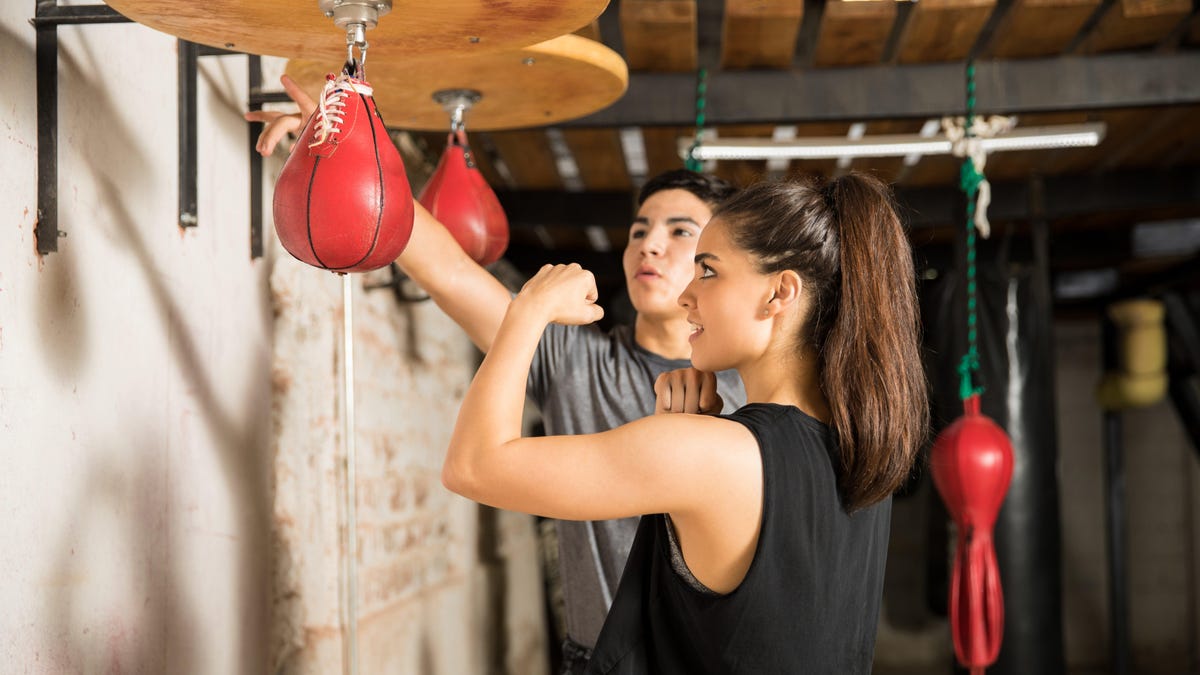The Speed Bag Is a Highly Underrated Workout
If you’ve ever walked into a martial arts gym, you’re familiar with the rapid thud-thud-thud-thud-thud of the speed bag. That small, air-filled bag that hangs on a swivel may look innocuous—especially when set against the hulking presence of the...


Photo: antoniodiaz (Shutterstock)
If you’ve ever walked into a martial arts gym, you’re familiar with the rapid thud-thud-thud-thud-thud of the speed bag. That small, air-filled bag that hangs on a swivel may look innocuous—especially when set against the hulking presence of the bigger, heavier bags—but it happens to be a seriously underrated form of exercise, the benefits of which extend far beyond the gym.
Develop strength, speed, and hand-eye coordination
Even if you’ve never used a speed bag, you’re probably familiar with the basic stance and form: You hit it with the side of your fist, moving your arms in a circular motion and alternating them in patterns of two, three or four strikes. Meanwhile, you’re also bouncing on your feet, so it’s both a hell of a workout for your shoulder and chest muscles and it engages your core.
As Michael Fredericson, a sports medicine physician at the Stanford University School of Medicine, notes, these are all muscles that you use in your everyday life, such as when you lift or carry things. “These are all very functional muscles,” he says.
Beyond building strength, the speed bag also helps you improve hand-eye coordination and speed. You have to time the bag hitting the platform and bouncing back, striking at just the right moment to maintain a smooth rhythm; it’s not as easy as it looks—at least not at first.
G/O Media may get a commission
Just a few minutes in, you’ll feel the effects—your shoulder muscles start to burn and the rapid pace will tire you out. It’s a tough workout, but it’s also a satisfying one.
“It’s almost like a game,” says Dwight Pratchett, a boxing coach at Main Street Boxing & Muay Thai, who trains professional boxers Raphael ‘Trouble’ Igbokwe and Austin ‘Ammo’ Williams. “It’s fun.”
Help with injury prevention
Speed bag exercises strengthen the shoulder muscles, which stabilize our shoulder joints. Our arms are attached to our body by a ball-and-socket joint, which is why we can move our arms in so many directions—but it’s also what makes shoulder injuries so common.
As Ben Fung, a physical therapist and spokesperson for the American Physical Therapy Association, says using the speed bag can help prevent injuries. Plus, he says, because the speed bag is a low-impact exercise, “it’s wonderfully safe. It’s a low-risk activity with a lot of potential reward.”
Speed bag workouts can also help with some of the aches and pains of sitting at a desk all day. The upright position encourages good posture, while the strength training helps to offset some of the back and neck aches that come from a day of too many Zoom meetings and not enough movement.
How to get started
When it comes to learning the speed bag, it is helpful to have some instruction for proper technique. As Kristopher Gordon, a physical therapist at the Washington University in St. Louis School of Medicine, says, it’s really important to develop good control and mechanics.
One way to start is to hit up your local boxing and/or mixed martial arts gym. Make sure to find a gym that emphasizes learning proper technique, while also working with your particular goals. This Youtube video, by the channel csquaredboxing, is also a good guide for beginners.
The speed bag does come with a steep learning curve, but once you figure it out, it’s a satisfying way to work out. “I get a kick out of teaching people how to do [the speed bag],” Pratchett says. “Once they get it down, you can see the light in their eyes, that they’re doing it.”

 Troov
Troov 































